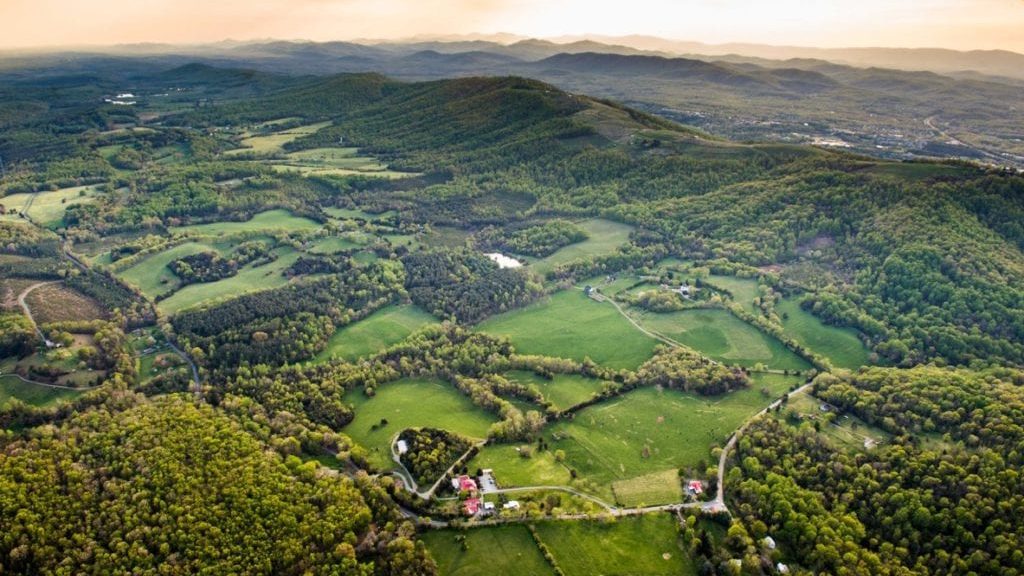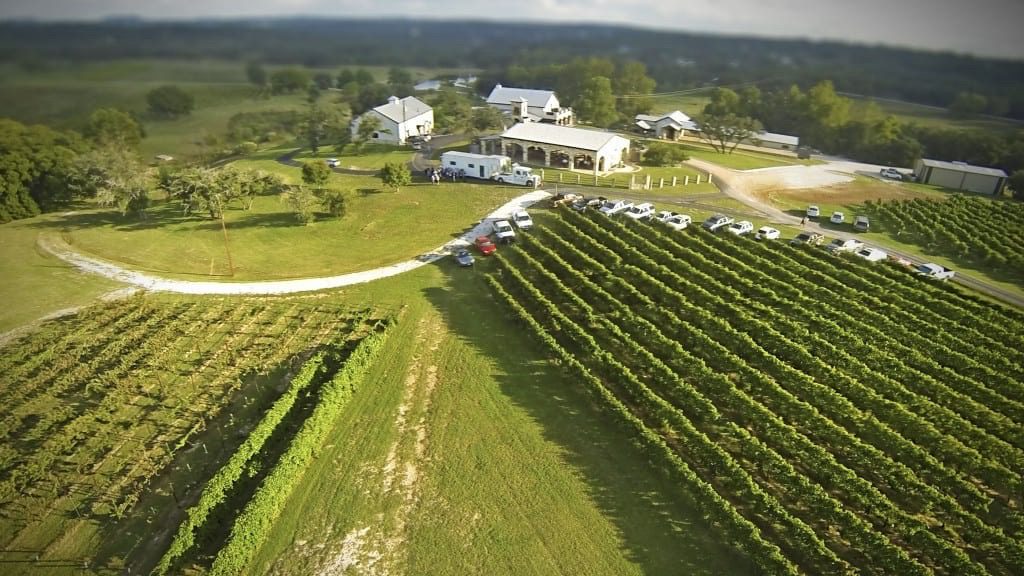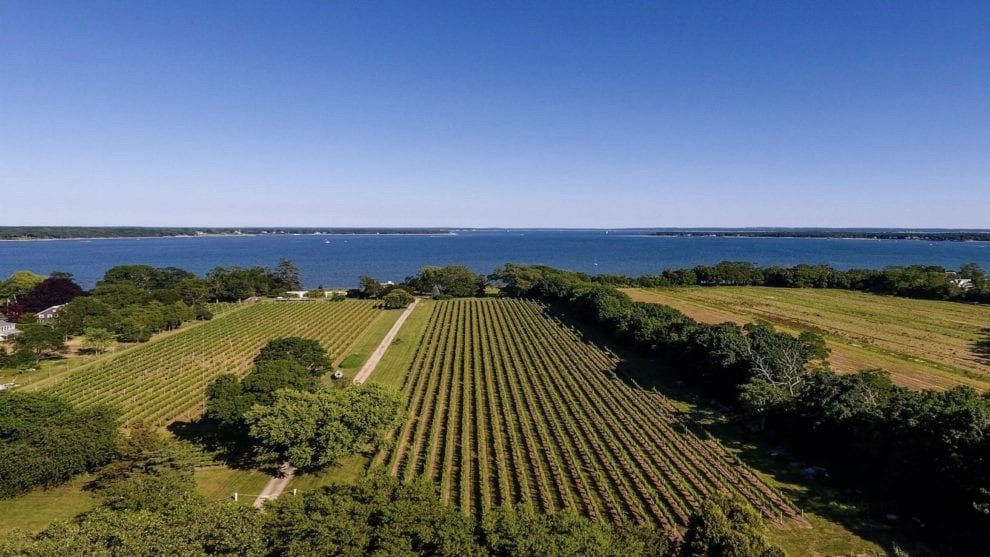Tourism is the fastest-growing sector of the wine industry in the USA. Each year nearly 50 million visitors make their way to American vineyards and wineries to taste the wines and see how the grapes are grown and processed. In fact, Napa and Sonoma Valley in California are the best-known wine regions in America, producing millions of gallons of wine each year.
But there are new wineries popping up in every corner of the country, making it possible to have a wine tasting excursion within a few hours drive of your hometown. If you think of wine tasting as a rarefied activity just for the “jet set” in France, you should know that the wine industry is booming all over America. Wine is produced in all 50 states, on more than 10,000 vineyards covering 700,000 acres of land, accounting for over one million American jobs and $219 billion in revenue.

Monticello Wine Trail, Virginia
The central Virginia wine industry dates back to the days of Thomas Jefferson, and is considered the birthplace of wineries in the USA. Jefferson’s crops had major pest problems, so he was never able to fulfill his dream of raising a grape that rivaled the fruit produced in Europe. But where Jefferson failed in the late 1700s, wine growers succeeded in the early 2000s. Wineries in the Blue Ridge Mountains have been booming since 2011, and there is no sign of a bust on the horizon.
Currently, the American Viticultural Area recognizes 33 member wineries on the Monticello Trail. Jefferson Vineyards was named in homage to the Founding Father and third president. Most notably, the vineyard is famed for its exceptional Viogniers, and is open to visitors most weekends.
Old Mission Peninsula, Michigan
There’s a reason vineyards have a tendency to be clustered together. When the soil and the climate are right for wine, word has a way of getting around. For example, the Old Mission Peninsula on the northern stretch of Lake Michigan supports approximately 30 lush vineyards. The halfway mark between the equator and the North Pole, this region happens to have the right amount of sunlight and warm temperatures to support these wineries.
The Brys Estate Vineyard and Winery is one of the largest in the region. In fact, it spans over 40 acres and boasts a comprehensive portfolio of Chardonnays, Pinot Noirs, Rosés and Rieslings. Not far from the Brys estate is the 20-acre Bowers Harbor Vineyards, established in 1991 by Linda Stegenga and her son, Spencer. Believe it or not, the vineyard produces more than 30 wines and hard ciders. Additionally, it is known for its exceptional Brut Rosé and sparkling Pinot Secco. Moreover, the tasting menu includes locally crafted cheeses and hand-made spreads, and the facility is dog friendly.

Fredericksburg, Texas
Texas is known as cattle country, but give it time. Texas is now the nation’s fifth-largest grape-producing state, and its burgeoning vineyards are quickly making a name for themselves. Back in the late 1970s, little was known about the feasibility of growing grapes in Texas, but Paul Vincent and his wife Merrill started planting test crops to see if they could make a go of it.
Numerous awards and over a million gallons of wine later, the Messina Hof Winery & Resort estate includes a villa with ornate guest suites available as part of a wine-tasting package.
If Tempranillos and Viogniers are your thing, Pedernales Cellars, is a boutique operation dedicated to making world-class wines that honor the local Texan terroir. Visitors can tour the underground wine cellars and relax with a glass of vino on the patio which features expansive views of the region’s rolling hills.
Walla Walla, Washington
Picture a small town in a colorful valley where fruits and vegetables – fresh off the farm – are sold from small stands and lovingly prepared in local restaurants. Live bands perform in the town squares, and everyday life has an easygoing flair. While it may sound like a scene from a 20th Century Norman Rockwell painting, it also describes present-day Walla Walla. Agriculture has been good to Walla Walla, which has long been a leading producer of sweet onions, strawberries, asparagus, and wheat.
Subsequently, over the past few decades, wineries in the USA have increasingly made Walla Walla their home. There are now approximately 120 wineries spread over 2,800 acres across the Walla Walla Valley. The Walla Faces company includes a vineyard, an inn, a tasting room, and a wall of art featuring the faces of all the people who helped Debbie and Rick Johnson achieve their dream of living a wine-inspired life.
If all of this sounds a bit folksy and eccentric, then you’ve hit upon the unique charm of the Walla Walla Wine Scene. Walla Faces is known for its Cabernet Sauvignons and Red blends, and the vineyard is open for tours every Saturday. Reininger Winery is known for its award-winning Syrah, and the hosts are very knowledgeable about wine production and the subtleties or terroir and flavor. Open for tastings most weekends.

North Fork, Long Island, New York
The northeastern tip of Long Island is dotted with dozens of vineyards that specialize in Chardonnays, Merlots and Cabernet Francs. Given that you’ll be imbibing, a designated driver is a must, or why not hire a local tour operator? New Vine Wine Tours makes planning your trip smoother than an Argentine Rioja. They are intimately familiar with all of the wineries in the area, and will even make reservations for you at the sites that you select.
A visit to wine country will put you in close proximity to Long Island’s charming antique shops, vegetable stands, and unspoiled beaches, so you might want to spend more than a few hours on the wine trail. The Shinn Estate Vineyards and Farmhouse operates a beautiful bed and breakfast on the site of their working farm.

